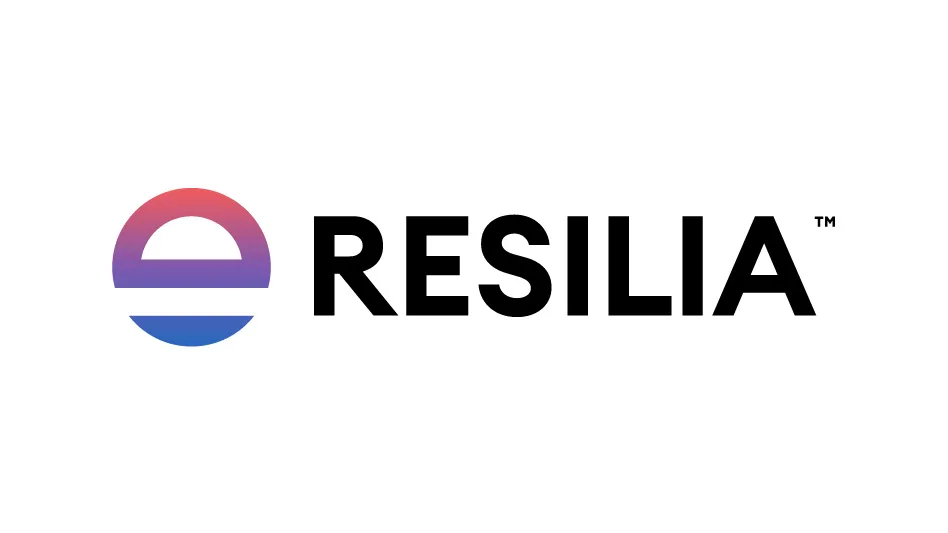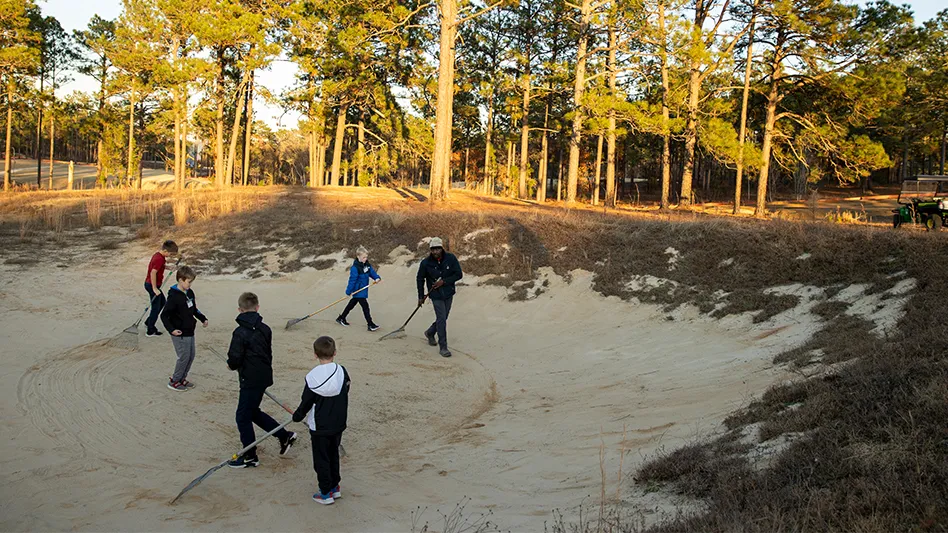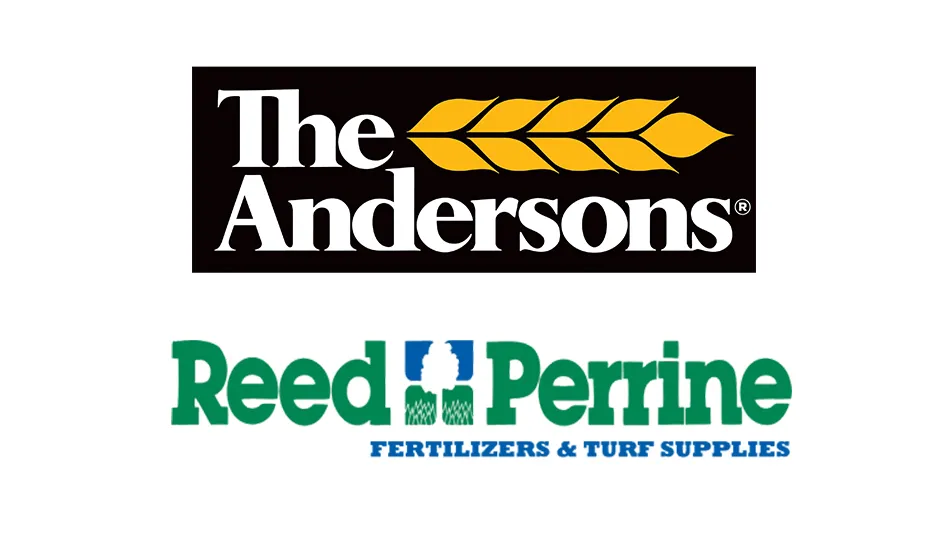
One of my first jobs was as a part-time helper on the crew at the local golf club in my hometown. I spent four hours every weekday during the summer of 2015, picking the driving range clean, washing the range balls and restocking them in the giant bucket we had sitting in the pro shop.
It was nothing glamorous and the pay wasn’t fantastic, but as a 15-year-old kid, I was content enough to return for every summer until I left for college. Why? Because through the four summers I worked at that golf club, my bosses worked with me to create a job I enjoyed working at.
As the newest flock of teenagers and young adults like myself flow into the workforce one by one, many younger employees are now identifying as members of Gen Z, the generation born somewhere between the late 1990s up until the early 2010s. They’re the first “digital generation,” and as such have developed a unique identity in the past few years as they’ve come into young adulthood.
In an attempt to connect veterans of the industry with their younger employees, I’ve identified several key points I believe any superintendent or general manager might find useful as they begin to hire workers that increasingly identify with Gen Z.
1. Keep it simple
Gen Z are, for the most part, direct in conversation and hate circling around a topic. Conversations must have a point and get to it quickly, or they’ll tune out. The age of social media has hardwired young people’s heads to wanting to-the-point information as fast as possible so they can carry on with their work.
You don’t need to overcomplicate or overexplain what needs to be done. Keep the explanation as short as possible or you’ll risk losing their attention. Think of it like composing a tweet— if it seems longer than it needs to be, trim it down.
2. Don’t put them on a tight leash all the time
Many of my peers spend much of their time chaffing against the powers that be at our jobs and how some of our bosses “just won’t get off our backs.” We’re not a unique generation for saying this, it’s been a common complaint since the advent of the workplace.
There’s always points on the job when time is of the essence, like when the day begins and mowing must be completed ahead of play. But when the workflow slows and the crew can alter its pace, that’s when you can let them work more independently.
As young as they are, much of Gen Z is still going through its phase of wanting to be independent while still largely depending on superiors and authority figures for help.
3. Be honest about the job
One common frustration I hear from many of my peers when they begin a new job is the pay. Not in the “I should be getting paid more” way, but in the “they said I could be making this hourly rate, but instead I’m making far less” way. Plenty of people my age working jobs over the summer or beginning a new job aren’t complaining that the pay is lousy, but rather that the potential pay overshadowed what they’d actually make. It’s a technicality, and Gen Z hates technicalities.
If you are offering a job, let the person applying know what they’ll be making. The honesty is what makes the interviewee excited for the job and helps prepare them for the work environment.
4. Flexibility
We’ve beaten this point to death with a stick, but it still stands — Gen Z is young. They’re young and want to have a job that’s available to be flexible alongside with their schedules. A lot of personal schedules nowadays are unpredictable, and even outside the expected, something unpredictable is bound to happen. Life is hard to fully control. Aside from the unexpected, vacation is vital to the younger workers. Many of my peers feel that when putting in time for vacation, they’re often ignored or deemed less needing of it.
5. Show there’s an alternative to college debt
Nowadays, somewhere around 60 percent of college-aged Gen Z members are currently attending college, a rate higher than even the millennials who came before us. Alongside this rise in college attendance, the debate about the cost of higher education has also come back into the limelight. Many in Gen Z are turned off by the prospect of going into debt.
What’s the solution? Show them the alternative. A job in the golf industry can pay off better and be just as fulfilling as a college degree, and often some colleges offering associate’s degrees in turf management are subsidized, meaning the cost of college is even lower. Young workers want a job that pays well, but also want the college experience. If the option is available, why not both?
Jack Gleckler is an Ohio University senior and Golf Course Industry summer intern.

Pinehurst Resort, John Deere form partnership
John Deere and Pinehurst Resort have finalized a long-term agreement, naming the manufacturer as its Preferred Equipment Provider. As a part of the agreement, Revels Turf & Tractor, one the largest John Deere golf and turf distributors, will provide equipment service and support for the machines used to maintain the nine Pinehurst Resort courses including, famed Course No. 2 and The Cradle short course.
As a part of this agreement, John Deere and Revels & Turf and Tractor will help support with marquee events, including the 2024 and 2029 U.S. Open Championships as well as hosting the John Deere World Championship in 2022.
“This agreement will unite the rich legacies of Pinehurst Resort and John Deere,” said Bob Farren, CGCS, director of golf course & grounds management at Pinehurst Resort. “Pinehurst is well known as a premier golf destination, with a reputation of delivering championship conditioning levels for not only major championships, but for its members and guests as well. Our agronomy team looks forward to working alongside John Deere and Revels Turf & Tractor to leverage the top equipment and turf solutions to deliver a best-in-class golf experience to every guest at Pinehurst Resort for years to come. We are excited to see and be part of what the future may hold as we work together to create solutions that will benefit the turf industry.”
In addition to the use of the John Deere equipment at Pinehurst Resort, the agreement will also allow the brand and the golf destination to partner on other industry growth initiatives, such as Green Start Academy. Moving to Pinehurst Resort for its 2021 program, Green Start Academy, held in partnership with John Deere, Bayer, and Rain Bird, will invite 50 of the brightest assistant superintendents from across North America to Pinehurst for a unique educational and networking experience.

Not your normal Pacific Northwest summer
By Ron Furlong
I would venture to guess that 108 degrees Fahrenheit sounds pretty darn to hot most people. Even folks in states like Arizona, California, Florida and Texas might even admit to that sounding a bit warm. But 108 in the Pacific Northwest is not that same as 108 in those traditionally hot pockets of the country. 108 degrees for us in Seattle may seem more like 125 Fahrenheit to other places.
The last week of June and the first week of July saw unprecedented temperatures for the Pacific Northwest. To put the 108-degree mark Seattle hit on June 28 in context, the average temperature for that date in the city is 73.
Portland, Oregon, hit 116 degrees on the same day. Although Portland does trend to the warmer spectrum in the Pacific Northwest, there is no dismissing these types of temperatures.
Golf course greens in the Pacific Northwest are almost exclusively Poa annua. Poa, of course, does not care for extreme temps, which is the main reason it thrives out here. We don’t (sorry, didn’t) experience 100-plus temps very often, let alone a multi-day stretch of them. In fact, we can often go an entire summer without seeing 90.
Safe to say it was a bit surreal to see the forecast six or seven days before the extreme heat was going to hit us. At one point the Seattle Times had the expected high on June 28 at 114. We ended up hitting 108, shattering the recorded record high for the Emerald City by 4 degrees.
Superintendents throughout the region were preparing for the heat event with the same apprehension and concern one might feel in preparing for an approaching hurricane or flood event.
My golf course, Avalon Golf Links, is about 75 minutes north of Seattle in the Skagit Valley region of Washington. Although our temps trend a few degrees cooler than Seattle, anything north of 100 degrees is nothing to take lightly. My assistant, Tyler Harris, and I started to formulate a game plan about a week before the extreme stretch.
We figured out an afternoon hand-watering schedule, as well as an afternoon syringing schedule, coordinating this with the pro shop to secure some gaps in play to allow us to cool the Poa. The problem with extreme heat in June is the long hours of sunlight. June heat is always more stressful than August or September heat because of the length of sunlight.
We also raised heights about a week before on the greens from .100 to .120 and dropped our daily mowing from two sides a day (we have three nine-hole sides to make up our 27 holes), to one per day and increased our rolling accordingly.
But it wasn’t just the planning of water and figuring out mowing and rolling that had to be considered. For the first time in my 19 years at Avalon, I had a legitimate concern about Pythium, a disease I haven’t given serious thought to since leaving Minnesota a quarter century ago.

Jacob Close is a new sales rep for Simplot in our region, and also a well-respected past superintendent. He observed regionwide concern for the high-temp disease.
“Many superintendents in the region put out preventative Pythium apps before the weekend,” Close says. “After we got through the extreme heat, I heard of no courses that ended up with a Pythium outbreak.”
Close also saw many superintendents doing the same things we did at Avalon: raising heights and reducing or even eliminating mowing for about a week. “Regionwide, grass came through healthy for the most part,” he says. “It was definitely a very long eight to 10 days for everyone, but almost all of them were successful.”
I think two things more than any other may have helped us get through the heat event mostly unscathed.
One, our normal preconditioning plan. Preconditioning for summer stress is not something you do immediately before an event like this. It must be part of your seasonal program. It starts every spring. A solid fungicide, fertility, wetting agent, plant growth regulator and biostimulant program must be in place. I can’t imagine how tough it would have been surviving this event without the biostimulant/extract program we are on at Avalon. Without that strengthening of the physical and biological aspects of the soil, it would be so much more difficult to keep the Poa alive and healthy during the extreme temps.
The second most important thing that got us through was undoubtedly the use of our soil moisture meters. Close also noticed this was a savior for most superintendents. “I believe the widespread use of moisture meters has allowed superintendents to better prepare and manage through intense heat without making the soil profile too wet,” he says.
I have to agree with Close. Although we lost some speed through the event as we raised heights, mowed less and watered more, the moisture meter allowed us to not overwater to the point of overly saturated and soft.
As I write this a few weeks after the heat, it still has not rained on our golf course in five weeks, and none is in the forecast. Although our temps have dropped to normal (mid 70s), we are in the midst, like many in the country, of a drought. I think this is in the new norm. High-temp events and little to no rain.
Even for us in what has traditionally been a mild region for summer, the game has changed. I think you either change with it or get left in the dust. Literally.
Ron Furlong is the superintendent at Avalon Golf Links in Burlington, Washington, and a frequent Golf Course Industry contributor.

Remembering Perry Dye
Perry O’Neal Dye, ASGCA, died July 8, 2021 in Denver. He was 68.
A member of one of the most famous families in golf, Dye received his first experience building golf courses at age 12, when he began an apprenticeship under his father, ASGCA Past President Pete Dye. He accompanied his father to work on sites in the Midwest and the Dominican Republic through his youth and college years.
Perry formed Dye Designs in 1984. The company is known for building unique, environmentally sensitive golf courses. In 1986, Dye Designs further expanded internationally as Perry recognized the growing demand and market for world-wide golf services. In Japan alone, Perry designed nearly two dozen golf courses, and Dye-designed facilities can be found in more than 15 countries.
With more than 80 courses to his credit, Perry’s dedication to golf included promoting growth within the golf course industry by cooperating with and supporting industry and professional groups, civic organizations and the general public. A member of the Golf Course Builders Association of America, in 2004 he received the inaugural award that bears his name – the Perry O. Dye Service Award – which honors “exceptional individuals who have unselfishly contributed their influence to foster positive changes for the association and have continually endeavored to make it better.”
Tartan Talks No. 61

A. John Harvey relishes the team aspect of designing, building and renovating golf courses. Early in his career, he received a firsthand glimpse of perhaps the biggest project in modern American golf: the Robert Trent Jones Golf Trail.
His time working for Robert Trent Jones Sr. and Roger Rulewich on the gargantuan Alabama project enhanced his zest for collaborating and communicating with fellow industry professionals. That zest has carried into the work Harvey has secured and completed in the past decade for his own firm, A. John Harvey Golf Course Design.
“I like to listen to different mindsets and different experiences, whether it’s professionally or just what’s going on in other people’s lives and what’s going on in the day-to-day to world,” Harvey says on a Tartan Talks podcast. “That was something fostered at an early age from Mr. Jones and Roger … that it’s a team.”
Harvey shares stories from past work on the RTJ Trail and Anglebrook (New York) Golf Club and current efforts at Rockland (New York) Country Club and 36-hole Crystal Mountain (Michigan) on the podcast. He also describes how he has Curtis Strange and Nick Faldo to thank for his first encounter with the legendary Jones in 1988. Visit the Superintendent Radio Network page on Apple Podcasts, Spotify and other popular distribution platforms to hear the conversation.
Course news
Pine Lakes Country Club, Myrtle Beach’s first golf course, reopened following a greens and bunker restoration project. Guided by architect Craig Schreiner, work included converting greens from paspalum to Sunday Bermudagrass. The putting surfaces were also expanded by more than 21,000 square feet.
Cutalong at Lake Anna unveiled its new Tom Clark-designed 18-hole course. The Virginia layout recreates features and hole layouts from various British and American courses while showcasing the area’s mining heritage.
PGA National Resort & Spa unveiled its new nine-hole Andy Staples-designed “Staple Course.” Holes range from 48 to 130 yards.
Duininck Golf is working with the TPC Network to enhance bunkers on the Greg Norman-designed Oaks Course at TPC San Antonio. The 7,435-yard course is site of the PGA Tour’s Valero Texas Open and features 53 bunkers.
Industry buzz
A combination of water stations and refillable water bottles from Sweden’s Bluewater helped The R&A avert the need for around 100,000 single-use plastic water bottles at The 149th Open at Royal St George’s in Sandwich, Kent.
The Turf and Ornamentals business of Bayer announced Tetrino, which features the new active ingredient tetraniliprole, is available for purchase. The technology in Tetrino provides white grub and annual bluegrass weevil control in one solution.
Atticus announced the rebranding of its professional non-crop market business to EcoCore. Michael Maravich will serve as the vice president for the EcoCore markets.
BASF introduced Encartis fungicide, a dual-active fairway solution that provides preventative and curative activity against dollar spot and 10 other key foliar diseases. Encartis is offered in a pre-mix formulation, combining the boscalid and chlorothalonil for preventive defense and curative action.
Syngenta announced its GreenTrust large patch prevention assurance program is now available in California and includes new recommendations with the addition of Posterity XT fungicide in other regions. The Ascernity fungicide label has also been updated to increase the number of maximum annual applications from two to four.

Explore the August 2021 Issue
Check out more from this issue and find you next story to read.





